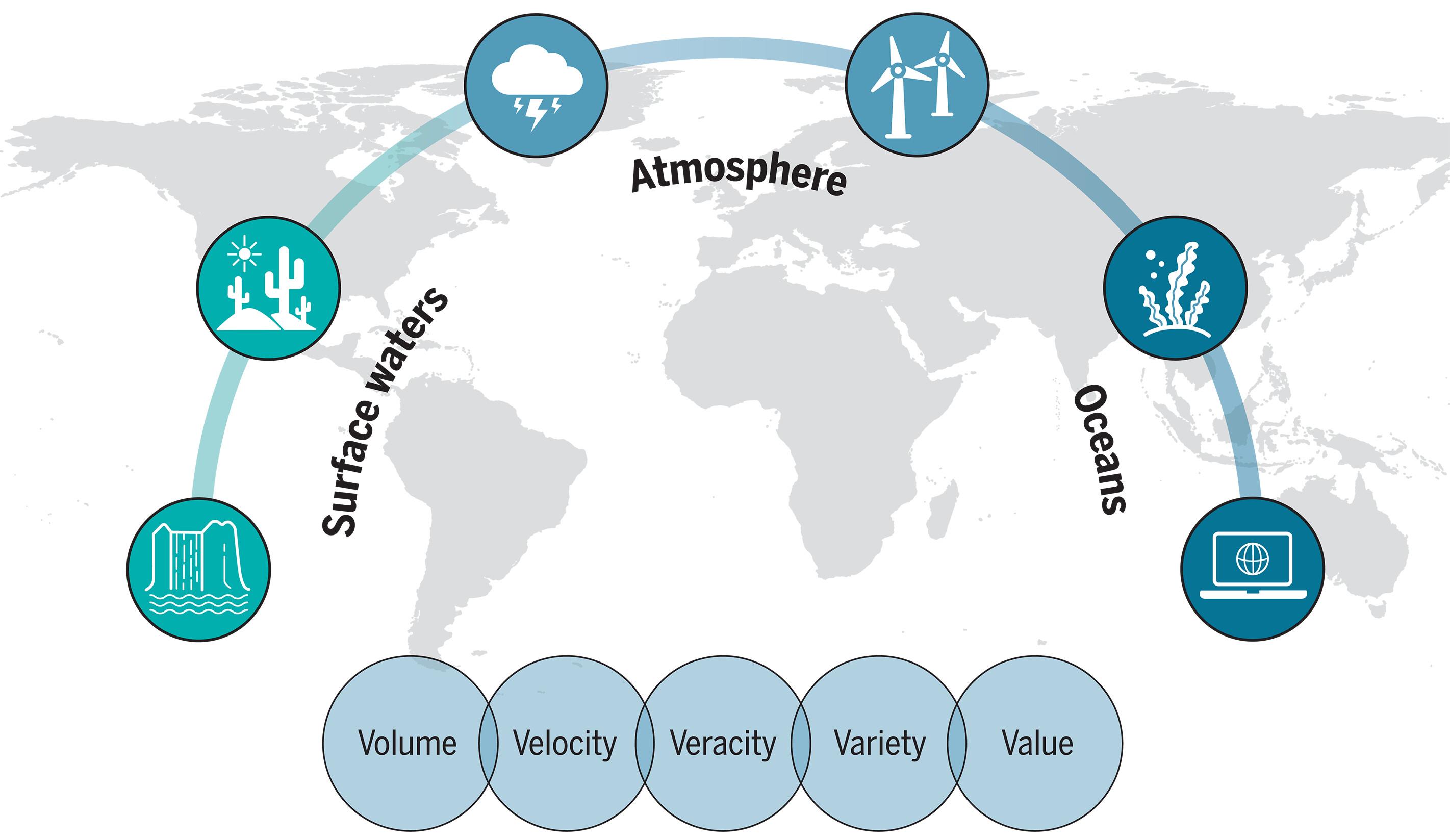地球科学中的大数据:新兴实践与前景。
IF 45.8
1区 综合性期刊
Q1 MULTIDISCIPLINARY SCIENCES
引用次数: 0
摘要
地球和卫星传感器的数量和分辨率的提高,再加上分辨率更高的模型,导致地球科学数据量激增。这种数据丰富的环境正在改变地球科学的实践,将其从发现和应用科学扩展到新的领域。本综述重点介绍大数据在水文学、海洋学和大气科学这三个分支学科中的最新应用。我们说明了大数据与当代科学挑战的关系:可复制性和可重复性,以及从原始数据到信息产品的过渡。大数据为增强我们对地球复杂模式和相互作用的理解提供了前所未有的机遇。数字双胞胎的出现使我们能够从过去学习,了解现状,并提高未来预测的准确性。本文章由计算机程序翻译,如有差异,请以英文原文为准。

Big data in Earth science: Emerging practice and promise
Improvements in the number and resolution of Earth- and satellite-based sensors coupled with finer-resolution models have resulted in an explosion in the volume of Earth science data. This data-rich environment is changing the practice of Earth science, extending it beyond discovery and applied science to new realms. This Review highlights recent big data applications in three subdisciplines—hydrology, oceanography, and atmospheric science. We illustrate how big data relate to contemporary challenges in science: replicability and reproducibility and the transition from raw data to information products. Big data provide unprecedented opportunities to enhance our understanding of Earth’s complex patterns and interactions. The emergence of digital twins enables us to learn from the past, understand the current state, and improve the accuracy of future predictions.
求助全文
通过发布文献求助,成功后即可免费获取论文全文。
去求助
来源期刊

Science
综合性期刊-综合性期刊
CiteScore
61.10
自引率
0.90%
发文量
0
审稿时长
2.1 months
期刊介绍:
Science is a leading outlet for scientific news, commentary, and cutting-edge research. Through its print and online incarnations, Science reaches an estimated worldwide readership of more than one million. Science’s authorship is global too, and its articles consistently rank among the world's most cited research.
Science serves as a forum for discussion of important issues related to the advancement of science by publishing material on which a consensus has been reached as well as including the presentation of minority or conflicting points of view. Accordingly, all articles published in Science—including editorials, news and comment, and book reviews—are signed and reflect the individual views of the authors and not official points of view adopted by AAAS or the institutions with which the authors are affiliated.
Science seeks to publish those papers that are most influential in their fields or across fields and that will significantly advance scientific understanding. Selected papers should present novel and broadly important data, syntheses, or concepts. They should merit recognition by the wider scientific community and general public provided by publication in Science, beyond that provided by specialty journals. Science welcomes submissions from all fields of science and from any source. The editors are committed to the prompt evaluation and publication of submitted papers while upholding high standards that support reproducibility of published research. Science is published weekly; selected papers are published online ahead of print.
 求助内容:
求助内容: 应助结果提醒方式:
应助结果提醒方式:


